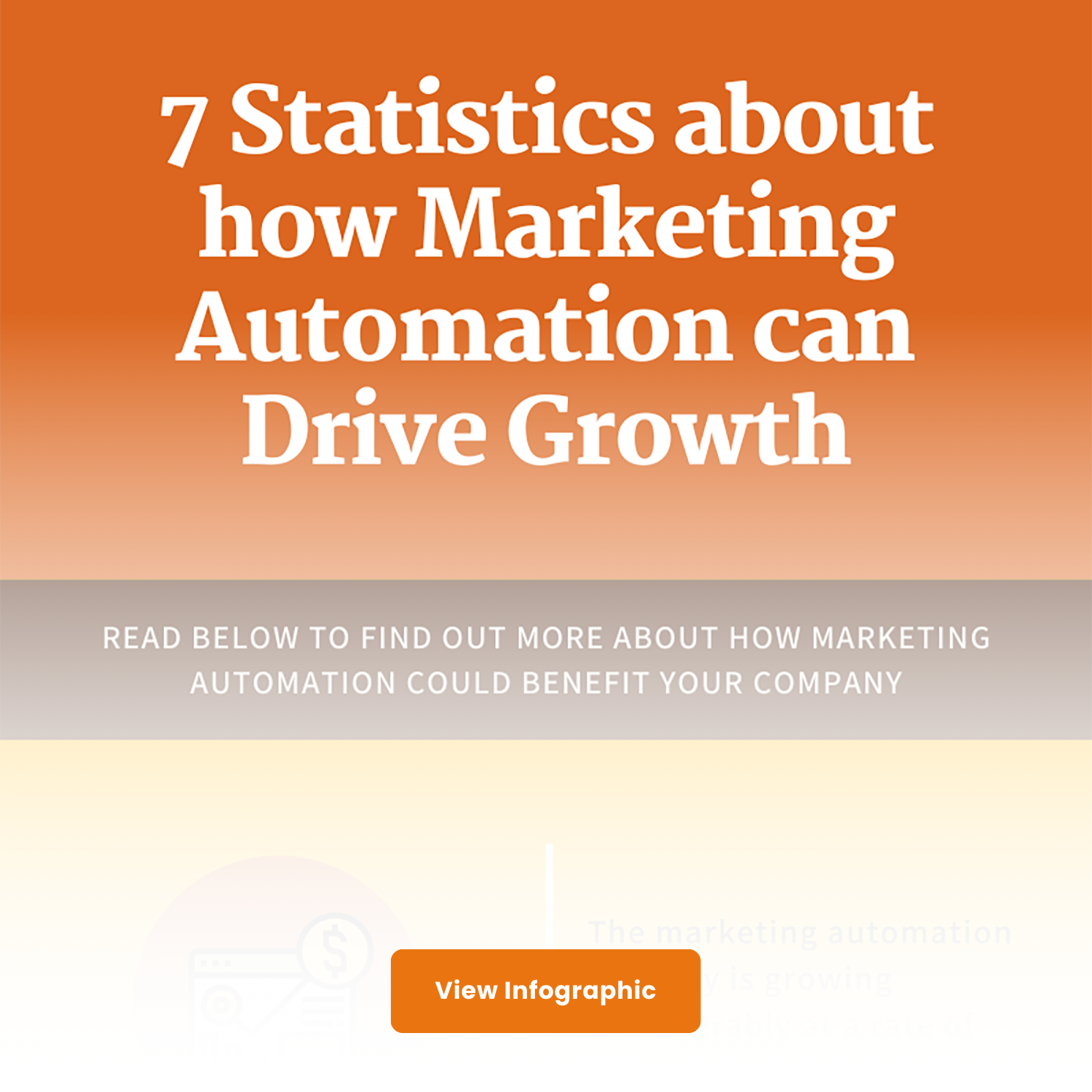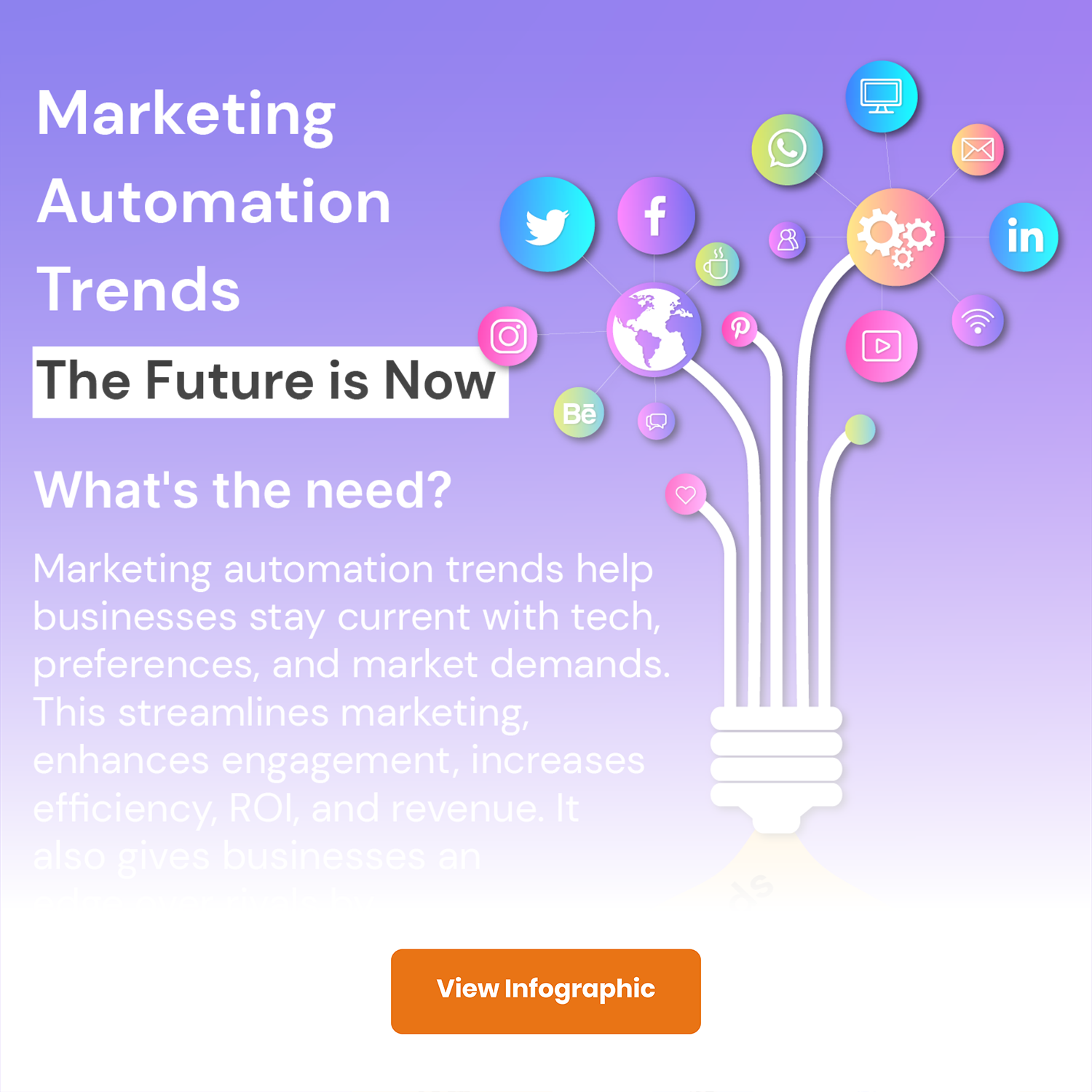
The marketing automation market has increased extensively over the past few years. In fact, the industry is expected to be worth over USD 9.5 billion by 2027. In the past few years, the world has seen a massive rise in the adoption rate of putting certain aspects of strategy on autopilot as more and more companies learn about the benefits of doing so.
Despite this, there are still many businesses out there that haven’t discovered how automated marketing can generate leads and increase conversions.
It doesn’t matter what industry, size, or business model your firm is in. Marketing automation trends and adoption can give a significant 34% increase in revenue. Using marketing automation could be a game-changer for one’s organization.
Why You Need to Embrace Marketing Automation Trends?
Imagine standing at the epicenter of the marketing universe, where a thrilling secret is reshaping the entire game. Step into the world of marketing automation trends, where innovation runs wild. Picture AI-powered chatbots orchestrating real-time conversations and predictive analytics, molding strategies with a touch of artistry. Wondering why this is a must-know? Because it’s your key to elevating your marketing game, setting engagement ablaze, and leaving the competition far behind.
As a marketer, you often spend much of your time generating leads for your company. And while generating leads is a crucial task, it won’t help you unless they convert. Keeping track of them can be challenging if your company receives a large number of leads (or simply has a small marketing department).
You won’t be able to convert leads without any encouragement beyond their first visit to your site, no matter how interested they are in your products or services.
The good news is that marketing automation software will automatically track all the leads you receive and, based on your settings, can even break them down by industry and company (for B2B businesses).
You can then determine which marketing messages to send to each lead, increasing efficiency. 96% of B2B marketers agree that segmentation is one of the most effective ways to improve conversion rates, and the benefits are similar for B2C businesses.
A survey found that 74% of marketers believed that targeted personalization increased customer engagement. This means you might be able to boost your marketing effectiveness by targeting prospects according to their interests.
Also read: Retail Trends: Clear Evidence of the Industry’s Bold Transformation
Now the question is, are you maximizing your marketing automation efforts?
To optimize your marketing campaigns, you must keep up to date on the latest marketing automation trends. The top marketing automation trends you can use to take your campaigns & projects to the next level are on this page.

8 Latest Marketing Automation Trends for 2025
1. User-quality data
In an Experian report, 95% of business leaders reported that poor data quality had a negative impact on their business.
Marketers must pay attention to quality.
To make informed decisions about your site’s design, calls-to-action (CTAs), and copy, you need to know if your digital marketing strategy worked for your target audience and all users.
Think what it would be like if your company could automatically track leads and even potential leads. That kind of information would tremendously impact the sales and marketing department.
It would be easy for you to focus your efforts and analyze your qualified leads. Additionally, you would make data-driven decisions about your marketing efforts. The results- Higher conversion rates would translate to more leads and sales for your business. The site’s design, CTAs, and copy would be tailored to what resonated with qualified leads the most.
Also Read: Advancements Ahead: Top 12 Strategic Technology Trends
2. Lead capture
It’s no secret that leads generation and nurturing are the most crucial stages in a sales funnel, and it’s the step that can make all the difference in driving your conversions and revenue. Taking and nurturing leads isn’t easy; historically, it requires a great deal of manual effort.
Automation will become increasingly popular in 2025 as repetitive, manual tasks are automated, and 2025 will be the year of rapid adoption at every stage. With automation tools, you’ll easily create high-converting landing pages with lead capture forms to gather valuable lead information like email addresses, names, and phone numbers. This form can be integrated with your customer relationship management (CRM) software to ensure leads are captured, qualified, and nurtured.
Marketing automation automatically transfers lead information to your CRM when integrated. Using the no-code CRM solutions, business users can automate lead profiling and scoring based on their behaviour and response, eliminating the need for manual work. You can then send follow-up emails to prospects. Additionally, it will automatically categorize prioritized leads so that you can follow up with them and convert them into customers. This level of automation will help businesses generate leads on autopilot in 2025.

3. The emergence of Omnichannel Marketing
A Google study found that 90% of multiple device owners switch devices every day, using three devices on average when doing an activity.
Omnichannel marketing is a key marketing automation trend for 2025, as you can provide your audience with a seamless marketing experience. With data unification and automation, small businesses can drive sales from a wide range of channels while providing a consistent user experience, from e-commerce to in-store.
Regardless of how many channels your TG uses to engage with your company, omnichannel marketing allows you to design a seamless user experience across numerous marketing platforms. You can start by integrating a CRM and marketing automation system to flow data between sales and marketing. These solutions are designed specifically for small and medium businesses.
Also Read: 80+ Eye-Opening Social Media Statistics for Every Channel
4. Focus on Marketing Automation Funnel
Gartner Marketing Automation report on the Future of B2B Buying Journey states that digital channels have enabled B2B buyers to gather information independently, which has made it easier for them to find information. With this new approach, sellers can influence customer decisions less frequently.
Customers are demanding personalized content, which is one of the hottest trends in digital marketing. Eighty-seven percent of businesses say their customers want personalized content. By 2025, however, adding a recipient’s name to an email subject line won’t suffice. Also, content recommendations based on a consumer’s visit to a web page won’t work either.
How can businesses ensure that leads receive the right information at the right time? Using marketing automation, you can personalize an otherwise impersonal digital experience by focusing on providing customers with information relevant to each step in the buyer’s journey. With the help of a CRM platform to automatically respond to customers, replacing the previous practice of responding piecemeal to customers.

5. Personalized content for users
Businesses must find ways to personalize their content to stand out in the increasing market saturation. Messaging & offers should be tailored to users’ specific demographics, interests, and preferences.
You should always have a solution to the problem of the audience you are targeting.
Creating content that speaks to your audience will attract them to your brand. Your audience will interact with your brand much more if you have a solution to their problem. By customizing your content and allowing your target audience to access it, you can gain a base of loyal customers over time, and they will stick with your business/brand.
With emerging tech like machine learning & artificial intelligence, you can have a better understanding of your audience and compile useful information that can be used to create automated profiles of your customers. Also, the website analytics tool lets you track customer searches—the searches people use to find your website. Knowing what brought someone to your business’s website helps you gain an understanding of the influences that drive sales by getting inside the customer’s mind.
And that is how you can get great ideas about customizing your content.
Also Read: 10 Key Practices that can make a Successful Digital Leader
6. Chatbots & Conversational Marketing
A practice every business should follow: stop one-way communication with customers. Have a conversation with them.
As Forbes points out, conversational marketing is the future of direct marketing because it shows that businesses care about their customers’ needs.
You can now conduct personalized conversations with customers using chatbots. They can even run 24/7, so you can ensure customer engagement while you are away from the office.
They are not meant to replace human employees entirely but to get the conversation started, answer common questions, and resolve simpler issues quickly.
Even though it’s now best to leverage the power of programmed bots, there are some best practices that you need to implement. Always remember that customers today are smarter and much more complex.
7. Social media marketing on autopilot
Data shows that of marketers who implemented automation, 76% saw positive ROI within a year, and 80% reported a boost in lead generation as a result – Marketing automation improved productivity by 20%!
By automating repetitive tasks, such as maintaining a brand account, responding to customers, etc., social media automation has significantly benefited brands.
Millennials and Generation Z spend more time on social media than ever before, even though Facebook is the most popular platform. Instagram and Twitter are making their significance, respectively.
Meanwhile, professional social media use is also on the rise. The number of active LinkedIn users has grown to over 770 million.
Businesses are increasingly turning to social media for advertising. However, you must establish a presence on multiple platforms simultaneously to compete.
This is where social media marketing automation comes in handy. In light of the growth of social media, these tools will continue to be crucial for digital marketing automation in the years to come.
8. Mobile-first approach
As mobile devices have become the primary means of communicating with the online world, mobile marketing is expected to be a major growth driver for businesses. With the help of tools like push and web notifications, SMS, mobile wallet, and in-app notifications, marketers will create elaborate mobile engagement strategies for brands. A marketing automation tool will ensure that these campaigns work cohesively at scale and weave an elaborate web around them.
A company Pixowl, for instance, reported a 17% increase in revenue dollars after implementing mobile marketing automation.
Considering the growth of mobile usage, brands will scramble to collect and analyze data regarding their mobile users and how they interact with them. To create personalized campaigns in the future, behavioural and transactional data will be crucial for understanding user intent and buying behaviours.
Also Read: Top 13 No-Code Agencies
Conclusion
A key focus of trends in marketing automation in 2025 will be to boost campaign performance, improve internal workflows, increase productivity, and increase customer engagement, repeat sales, and revenue. As such, if you are a business owner looking to outpace your competitors in 2025 and beyond, you will want to leverage marketing automation.
It takes a lot of planning and execution to launch a successful marketing campaign in the marketing automation market. The above-listed marketing automation trends will help you stay ahead of your competition and make your campaigns more successful.
Frequently Asked Questions(FAQs)
What are marketing automation trends?
Marketing automation trends refer to the latest technological advancements and strategies used to automate and optimize marketing processes for better efficiency and results.
What is the trend in marketing automation?
The trend in marketing automation is an increased focus on hyper-personalization, AI-driven insights, and the integration of diverse marketing channels for seamless customer experiences.
What is trending in automation?
In automation, trends include adopting AI and machine learning, process optimization, and using intelligent tools to streamline workflows and enhance productivity.
Is marketing automation in demand?
Yes, marketing automation is in high demand as businesses seek to improve their marketing efforts, customer engagement, and overall efficiency in a competitive digital landscape.
How can marketing automation benefit my business?
1. Saving time and effort on repetitive tasks allows you to focus on strategic activities.
2. Improving customer engagement through personalized and timely interactions.
3. Increasing efficiency and effectiveness in lead generation and nurturing.
4. Enhancing data-driven decision-making with insights and analytics.
5. Boosting overall marketing ROI by optimizing campaigns and resources.
Subscribe
Login
Please login to comment
0 Comments
Oldest
















